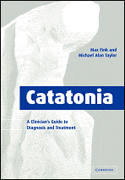Catatonia is a syndrome of motor dysregulation found in as many as
10% of acutely ill psychiatric in-patients. Treatments are well
defined and catatonia has an excellent prognosis when they are used.
Two leading neuropsychiatrists describe the features of catatonia;
teach the reader how to identify and treat the syndrome successfully;
and describe its neurobiology. Patient case histories from the
authors' clinical practices, as well as from classical literature,
illustrate the principles of diagnosing and treating patients.
Reviews
"...an excellent book on catatonia. The book is a very interesting
and clinically relevant review of the authors' extensive experience
in the research and treatment of this neuropsychiatric
illness...Authors Fink and Taylor provide us with valuable clinical
experience and information for an improved understanding and a more
effective treatment of this form of psychosis." Psychological Medicine
"There are no publications to which I can compare this book. In
general, it is a book for clinicians who wish to enhance their
knowledge of catatonia and feel confident they are treating it as the
experts in the field would suggest. The subtitle, 'A Clinicians'
Guide to Diagnosis and Treatment' is an apt description. Since the
severe, life-threatening forms of catatonia are infrequent, this book
will serve as an excellent source for consultation when faced with
neuroleptic malignant syndrome, delirious mania, classical catatonia,
or other presentations of the syndrome. It comprehensively summarizes
and discusses the collective wisdom found in the literature as well
as in the practice of these two renowned clinical research
scientists. The book succeeds in its purpose and I highly recommend
it for those who treat acutely ill patients, particularly in an
inpatient setting." Doody's Review ServiceG
"Overall, the book is extremely readable, informative, and engaging.
It is impossible not to be drawn to the drama of the vignettes. The
authors have done a great service to psychiatric patients by bringing
this syndrome back into the consciousness of psychiatrists,
especially young trainees. This book should be read by psychiatrists
whose practice extends beyond pure psychotherapy, and should be owned
by every psychiatrist who performs ECT. Neurologists, too, would do
themselves a favor by gaining an introduction to catatonia through
this book." Journal of ECT
List of patient vignettes
Preface
Acknowledgments
Chronology of catatonia concepts
1. Catatonia: a history
2. Signs of catatonia are identifiable
3. The many faces of catatonia
4. The differential diagnosis of catatonia
5. Catatonia is measurable and common
6. Past treatments for catatonia
7. Management of catatonia today
8. The neurology of catatonia
9. Back to the future
Appendices
References
Index.


